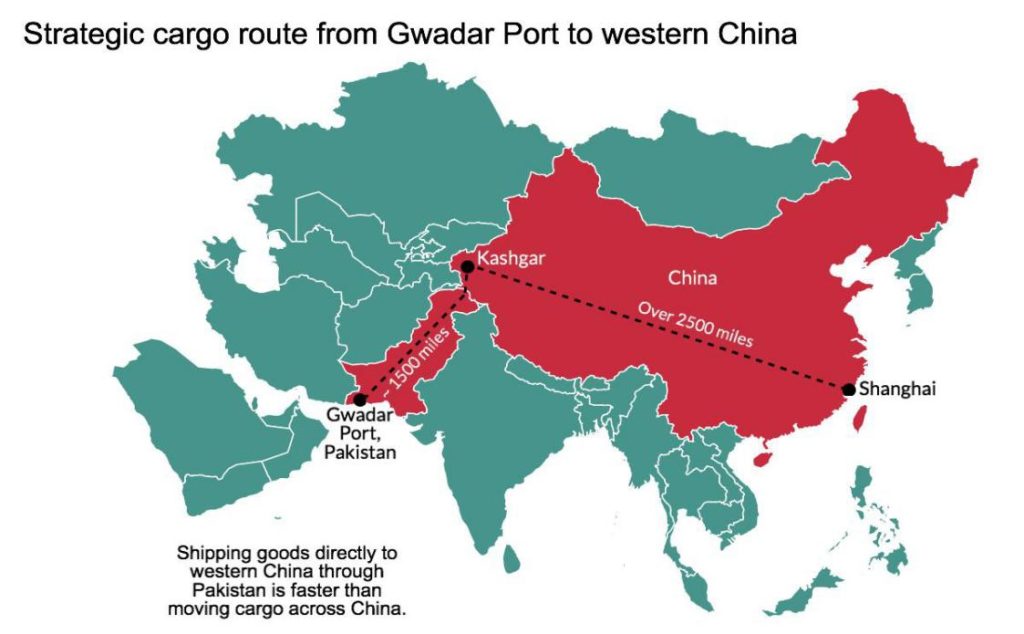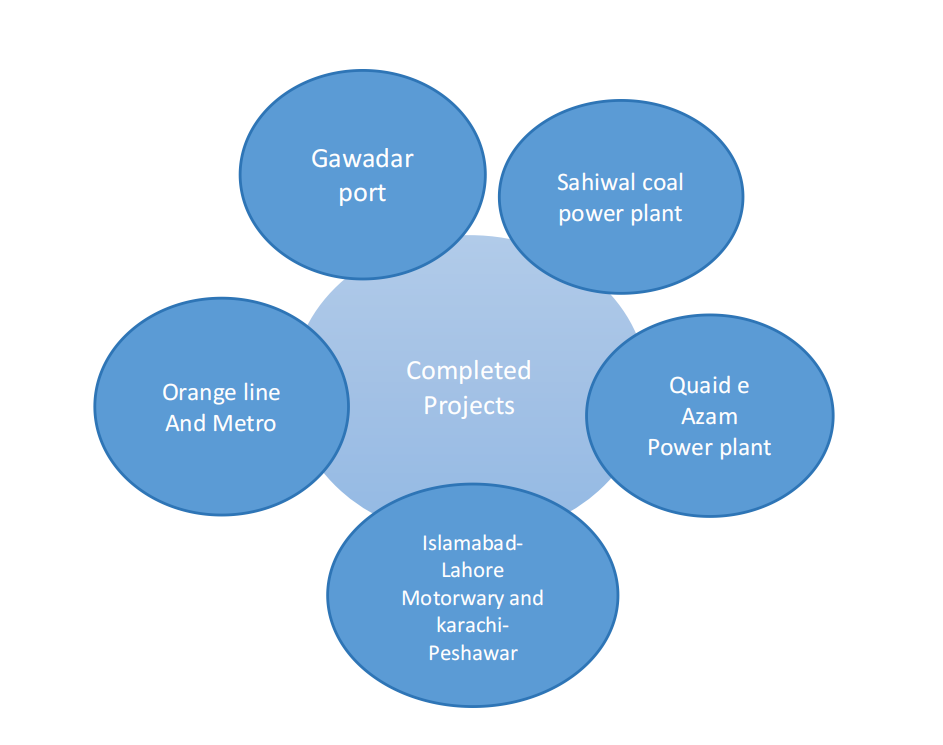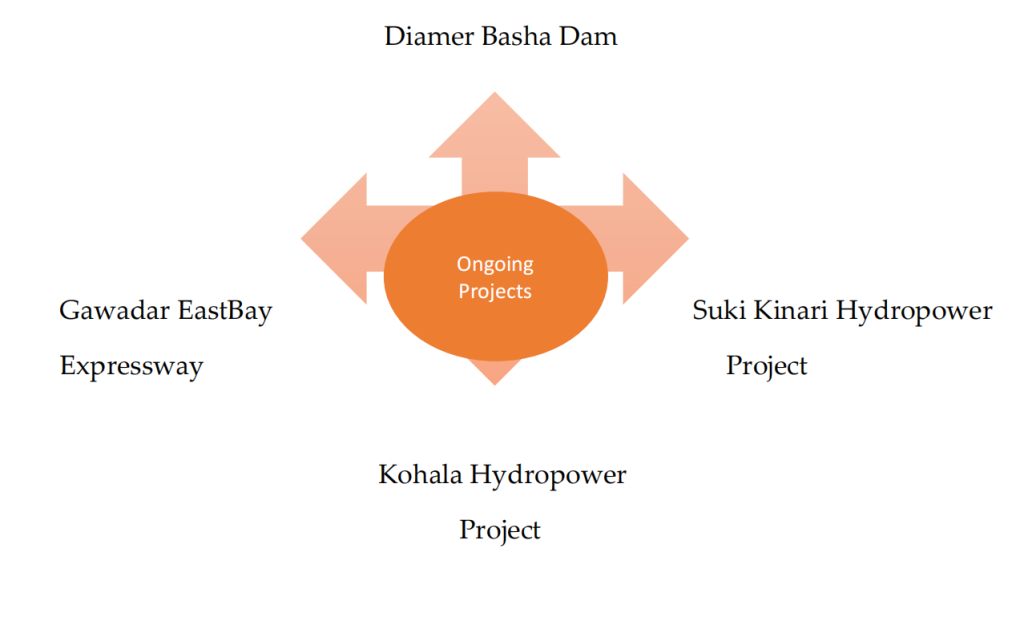CSS Pakistan Affairs | Analysis of the Decade of CPEC
The following question of CSS Current Affairs is solved by Rafia Razzaq under the supervision of Howfiv’s Pakistan Affairs and Current Affairs Coaches. She learnt how to attempt 20 marks question and essay writing from Sir Syed Kazim Ali, Pakistan’s best CSS and PMS English essay and precis teacher with the highest success rate of his students. This solved past paper question is attempted on the pattern taught by Sir to his students, scoring the highest marks in compulsory and optional subjects for years, and uploaded to help aspirants understand how to crack a topic or question, how to write relevantly, what coherence is, and how to include and connect ideas, opinions, and suggestions to score the maximum.

Outline
1-Introduction
2-A cursory Glance at CPEC projects
- ✓ Energy projects
- ✓ Infrastructure projects
- ✓ Special economic zone
- ✓ Intra Gwadar projects
- ✓ Social sector development projects
3-Scrutinizing the decade of CPEC in terms of Phases
- ✓ Phase I: 2015 to 2020(Infrastructure, Gwadar port development, orange line, socioeconomic development, and energy projects)
- ✓ Phase II: 2020 to 2025(( establishment of special economic zone, global initiatives for investment by globally recognized companies), digitisation (4th industrial revolution(fibre optics, AI).
4-How Far is Phase I and Phase II successful?
- ✓ Phase I: Initial goals, achievements, and success
- ✓ Phase II: Initial goals, achievements, and success
5-Critical Analysis
6-Conclusion

Answer to the Question
Introduction
The China-Pakistan Economic Corridor is a major growth axis that has not only proved to be the most fundamental flagship point for Pakistan but also has enormously provided a new direction to Pakistan’s economy. CPEC, being one of the largest bilateral investments, has been somewhat successful in bringing what it had promised, but as it is prescribed, the project needs efforts from both sides, and Pakistan is still not ready to harness the potential that CPEC is offering. Furthermore, CPEC has completed it’s first phase in Pakistan, starting with the construction of the CPEC’s jewel, Gawadar Port, as called by Asad Umer, “CPEC is the Jewel in BRI’S crown, and Gawadar is the Jewel in the CPEC crown”, investing in energy projects to several infrastructure development projects including the Kashgar to Khanjrab pass for trade exchange and has entered into it’s second phase of building socioeconomic zones and enhancing digitalization in Pakistan. Undoubtedly, CPEC has been successful in bringing the desired outcome for it has enhanced bilateral trade of both countries to 18.1% and reached a new height of investment from $46 billion to $65 billion. Moreover, it has given a new picture to the Economic demand of Pakistan through energy and transportation projects and is close to fulfilling the vision of 2025 with great distinction.

A cursory glance at CPEC projects
CPEC encompasses a long range of projects for Pakistan’s economic development. The energy sector includes 21 energy projects designed to minimize energy shortages in Pakistan and eliminate the energy crisis. Infrastructure projects, divided into Eastern, Western, and Central arteries, focus on 24 projects aiming to construct railways, highways, and roads for better regional connectivity. Furthermore, CPEC’s nine Special economic zones(SEZ’z) are aimed at fostering industrial cooperation between Pakistan and China through Foreign Direct Investment and industrialisation and creating better job opportunities. Additionally, 14 intra-Gwadar projects are aimed at making Gwadar Port a regional trade hub and encouraging urban development to increase trade, tourism, and local economic activity. CPEC also include several social sector development projects aimed at uplifting socioeconomic conditions by improving the health sector, hospitals, and education.
Scrutinizing the Decade of CPEC in terms of phases
CPEC, The first and foremost corridor of BRI, commenced in Pakistan in 2015 and became the centre of attention of all the surrounding powers. Its credibility can be traced through different phases from the time it started to the progress it made. Although CPEC completed its Phase I, which mainly held in itself 5 years of service and teleported to Phase II, which is also soon coming to an end to discuss what scope it had carried and what it has achieved till now can be demonstrated through different completed and ongoing projects under CPEC.
- Phase I(2015 to 2020)
From 2015 to 2020, Phase 1 of the China-Pakistan Economic Corridor (CPEC) focused on major energy and infrastructure projects to set the stage for long-term economic growth. This phase of CPEC focuses on the development of infrastructure, the construction of the Gawadar port, the Orange Line, energy projects, and socioeconomic development for Pakistan’s long-term development and to improve its declining economy. In addition, important projects like the Quaid-e-Azam Solar Power Plant, which was a significant step toward the adoption of renewable energy in Pakistan, and the Sahiwal Coal-Fired Power Plant, which was crucial in addressing the country’s severe power shortages, were completed during this phase. The Gwadar Port and the Orange Line Metro Train in Lahore were two examples of infrastructure development projects that improved Pakistan’s transportation system. Even though major projects like the Diamer Bhasha Dam and the Gwadar East Bay Expressway are still going on, this phase laid the groundwork for future economic expansion. While ongoing efforts continue to address remaining challenges, these projects’ successful completion demonstrated the potential of CPEC to significantly enhance Pakistan’s energy security and connectivity.


- Phase II(2020 to 2025)
Phase II of the China-Pakistan Economic Corridor (CPEC) builds upon the foundational infrastructure and energy projects of Phase I by focusing on industrial cooperation revolving around special economic zone, global investment, and digitization. However, this medium-term phase marks a significant shift towards economic diversification and technological advancement in Pakistan. The establishment of Special Economic Zones (SEZs) is a cornerstone of this phase, with major zones like Rashakai, Dhabeji, Allama Iqbal Industrial City, and Bostan SEZ either completed or in advanced stages of development. These zones are designed to attract global investments, with multinational companies through the investment by major companies like, EXO Nobel, Strong Stitch, and Century Steel already committed to significant industrial operations. In addition to industrial growth, Phase II emphasizes the importance of digitization as part of the Fourth Industrial Revolution. Key projects include the 820 km cross-border fiber optic link between China and Pakistan, which was completed in 2018 and serves as the backbone for improved digital connectivity. Furthermore, Ongoing initiatives, such as the development of IT parks in Islamabad and the implementation of Digital Television Terrestrial Multimedia Broadcast systems, further highlight the phase’s focus on enhancing digital infrastructure. The Terrestrial Cable project near the Khunjerab Pass and the Electronic Monitoring and Control System are also crucial components, ensuring secure and efficient communication networks.

How Far are Phase I and Phase II Successful?
First, Phase I of CPEC laid the critical groundwork for energy and infrastructure development. The successful completion of major energy projects and key infrastructure initiatives has had a positive impact on Pakistan’s economy. However, ongoing projects from this phase, especially in energy and infrastructure, highlight that while significant progress has been made, full success is contingent on the completion of these long-term projects. Moreover, the need to implement certain policies to make the projects successful and keep Pakistan’s economy on track and keep going is still a long and thoughtful process that Pakistan’s government need to work on. Furthermore, Phase II focuses on industrialization and digitalization, marking a shift towards advanced economic and technological development. The establishment of SEZs and progress in digitization projects indicate strong momentum towards achieving the goals set for this phase. The ongoing projects suggest a commitment to further enhancing Pakistan’s industrial and technological capabilities. Phase I did lay the groundwork for this Phase, but the underdevelopment of some projects which should be completed in a certain period of time remains the major problem as this phase is nearly coming to an end, but some projects are still not completed.
Critical Analysis
Pakistan, since its independence, has seen a major downfall in its economy and the political instability was just the supporting factor contributing to the regional crisis. However, CPEC came as the ray of hope for Pakistan to free it from the surrounding darkness of political instability, shaken economy and challenging foreign policy landscape. Undoubtedly, CPEC is going to transform Pakistan’s diplomatic and Geo-Political image to a sudden shift in its foreign policy and a more sustainable Geo economic approach. Pakistan’s government need to make credible and authentic policies, for their correct implementation can set Pakistan’s Geo strategic importance to a new world and it will give it a new meaning just as Stephen Cohen stated, “While history has been unkind to Pakistan, its geography has been it’s a greater benefit.” Pakistan just needs to use the resources provided by CPEC and harness whatever opportunity it will give.
Conclusion
The China-Pakistan Economic Corridor (CPEC) has been a trans-formative initiative for Pakistan, addressing critical energy shortages, enhancing infrastructure, and fostering economic development through two distinct phases. CPEC built a solid foundation in Phase I (2015-2020) with significant accomplishments in energy and infrastructure, such as the completion of significant power projects and the development of Gwadar Port. With the creation of Special Economic Zones and advancements in digital infrastructure, Phase II (2020-2025) has focused on industrialization and digitization. Although both phases have made significant progress, the final success of CPEC will be contingent on the ongoing development and implementation of projects. In general, CPEC has emerged as Pakistan’s beacon of hope, providing a means of achieving economic growth and stability in the face of political and economic difficulties.

CSS Solved Past Papers’ Essays
Looking for the last ten years of CSS and PMS Solved Essays and want to know how Sir Kazim’s students write and score the highest marks in the essays’ papers? Then, click on the CSS Solved Essays to start reading them.
CSS Solved Essays
CSS Solved Islamiyat Past Papers
Want to read the last ten years’ Islamiyat Solved Past Papers to learn how to attempt them and to score high? Let’s click on the link below to read them all freely. All past papers have been solved by Pakistan’s top CSS Islamiyat coach having the highest score of their students.
CSS Solved Islamiyat
CSS Solved General Science & Ability Past Papers
Want to read the last ten years’ General Science & Ability Solved Past Papers to learn how to attempt them and to score high? Let’s click on the link below to read them all freely. All past papers have been solved by Pakistan’s top CSS GSA coach having the highest score of their students.
CSS Solved General Science & Ability












